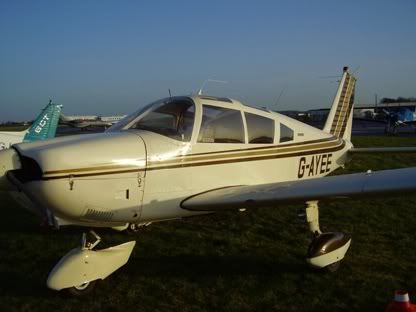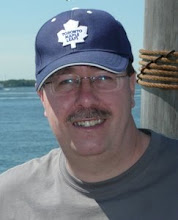Fortunately, there is an FAA instructor that lives in Oxford, so I can do it there. Next snag is that I am not signed off for tailwheel differences, so I couldn’t use the RV6 I have a share in. So I arranged to hire an old Piper Cherokee 180 from Pilot Flight Training at Oxford.
The day was fairly clear with good visibility and cold. There was a bit of a wind and at 240 / 15 it made for a nice crosswind on runway 19 at Oxford.
Bill Tollett turned up after I checked the aircraft and while it was being refuelled. So we had a briefing.
FAA BFR’s are merely flight reviews where you have to do a couple of hours review of the FAA Regulations and air law and then one hours flying training. There is no pass or fail, it is merely proof that you have had one hours flying instruction. I handed Bill the written questions he emailed me a few weeks ago with the answers and FAR / AIM references clearly indicated. One of them was a swine as for a long time, I couldn’t find where it listed the maintenance tasks a pilot was allowed to do – I knew it was in there, but could I find it? Could I buffalo! I did eventually find it tucked away.

Bill suggested we do the usual upper air work, steep turns, stalls etc. Including the US speciality – the departure stall! This is a fun one – you clean the aircraft up into take-off configuration, stuff in full power and nose up and up and up until it stalls at quite a steep climb angle. The upper airwork was fine. I find the contrast between the PA28 and the RV6 very stark indeed, but the PA28 felt like an old friend as I had trained on it and flown an Arrow for a while.
He gave me a simulated engine failure around Enstone and radioed for a landing on the northside grass. I went through the drill and must have been a bit dopey as I lined up downwind in the wrong direction! Bill didn’t say anything until fairly late when he realised I really hadn’t twigged that landing with a tailwind wasn’t a good idea! He did mention it though and I felt a perfect idiot and turned hard to line up for a more conventional approach. I thought the height was good, pulled on one stage of flaps, but obviously misjudged the headwind as I had to take the flap off as it was touch and go whether we would make it or not. Bill decided on a go-around as we may have made it but may also have taken the aerial off the control tower that stood between me and the threshold of the northside grass! CONCENTRATE STEVE!
We headed back to Oxford for a few circuits in various configurations. First was a normal approach and landing. The circuit height at Oxford is 1200’ QFE and left myself quite high and I probably cut too short a final. I got the height off with a sideslip and landed for a touch and go.
Next up a flapless. Again, left myself too high (what’s wrong with me today?), but got it off with sideslip and did a pretty fair crosswind flapless landing. I remembered from my training that I always seemed to do better flapless landings in the PA28’s than conventional landings for some reason.
Then the US favourite, landing with the wheels touching on a particular spot on the runway. In this case, the intersection of the two runways. I was determined to hit this. Handled it well and at low speed I was just over the spot but still a couple of feet up so I cheated and nudged the yoke down slightly then up again. We touched sure enough – not hard, but there was no doubt we were down! I apologised for cheating!
The final one was a glide approach with me pulling the power when I felt I could get in. While on the downwind leg a medivac Beech twin overtook us and had priority landing clearance with a vehicle following him down the runway. I don’t think there was anything wrong with the plane, but perhaps the passenger. So we extended a bit. Once that was clear I approached final and was pretty close and high. I could almost feel Bill biting his tongue thinking ‘pull the power, pull the power….’, I did pull it and yep – waaaayyyy too high. But this time I was determined not the cut it fine like I had at Enstone.
Full flaps, best glide, still way too high. So into a full sideslip as we started to hurtle down. This was doing the trick. I held the slip in until about 50’, then unwound it with an airspeed of 75kts and dropped to the flare and just flew level until the airspeed dropped. Made a reasonable landing of it in the crosswind, which I felt may have made up for the poor height judgement.
Back to the flight school and Bill signed the BFR off. The feedback was that apart from just missing at Enstone, my checks were a bit fast and he advised me to slow down and be more deliberate. Also he said my landings were good, but my circuits were a bit scrappy and the approaches were not great, the fact that I could land well off of such approaches didn’t disguise the average circuits. Thinking on it I do see what he means and vow to make amends in future. It is always good to have a variety of different instructor’s views – you never quite know what they will spot that you could do better.
Anyway, job done and FAA BFR in the book.
